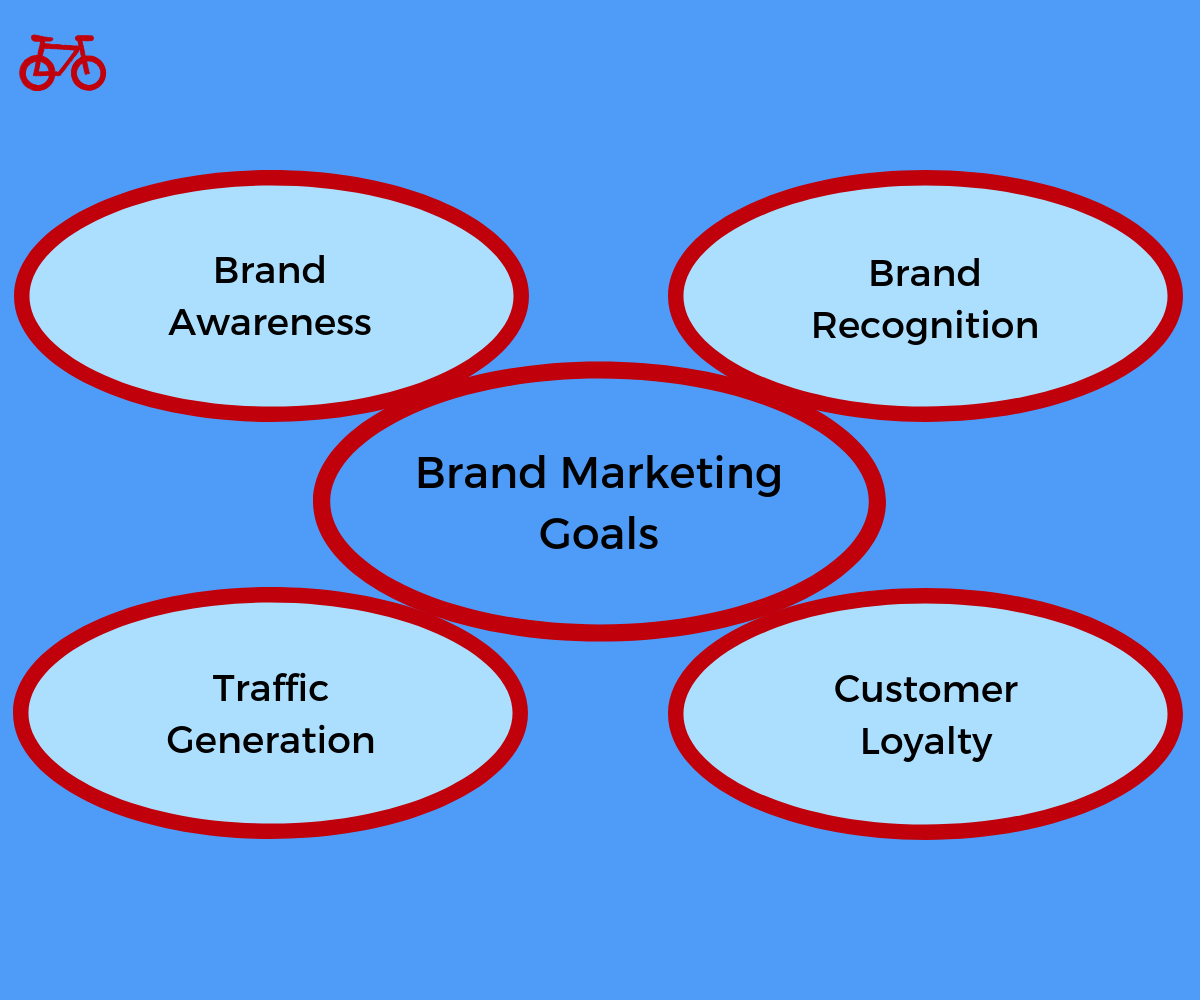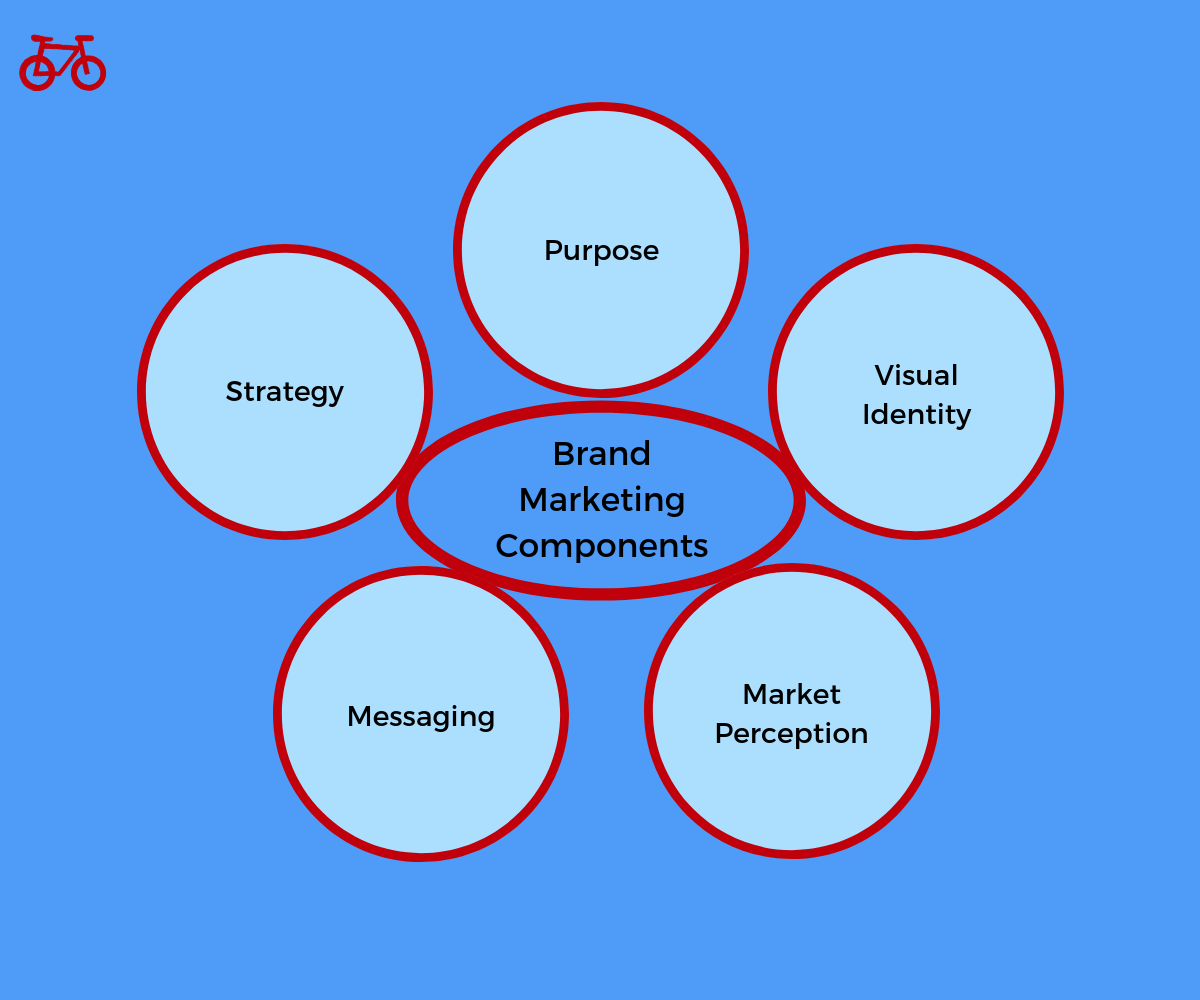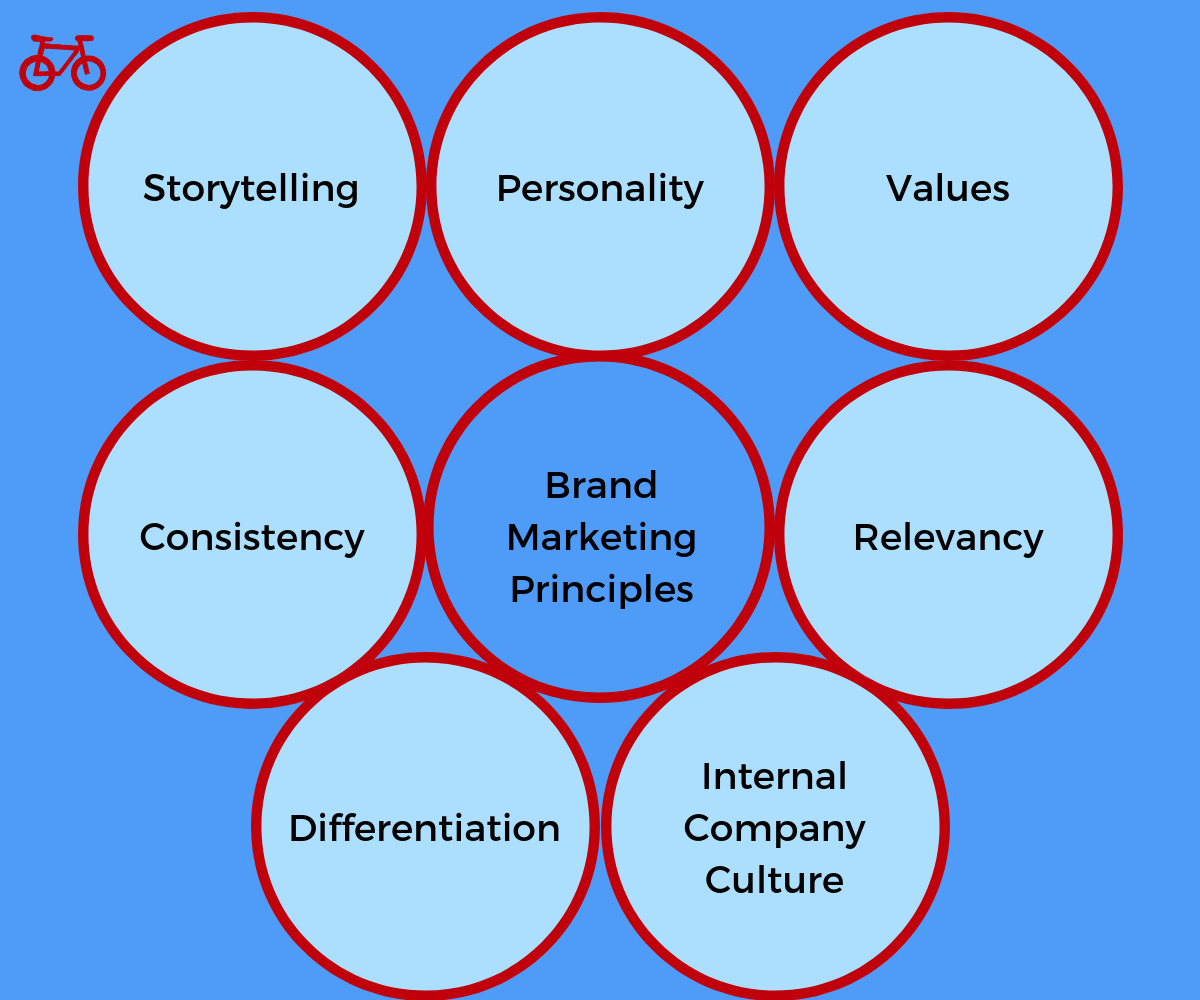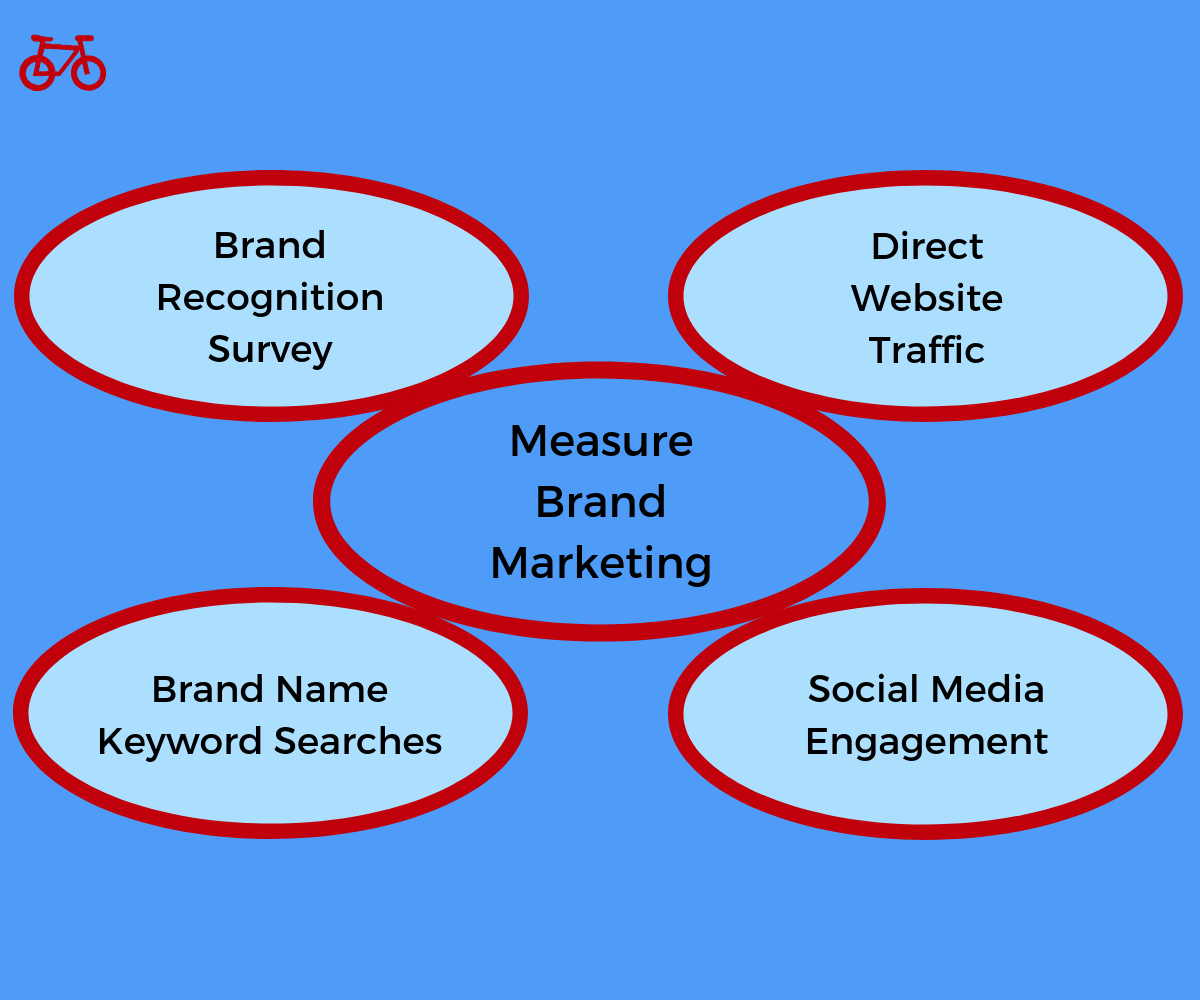Coca Cola. When I think of a strong brand or brand marketing, Coca Cola is always at the top of mind.
The red color. The text “Coca Cola” in its iconic font. It’s beautiful. It’s one of the most recognized brands in the world.
There is a lot more to branding than colors and the logo. There are entire strategies, plans, and a facet of marketing dedicated to it. That’s where we get brand marketing.
Here, we will take a look at brand marketing, understand the underlying ideas in brand marketing, and take a general overview of the brand marketing concept.
What is Brand Marketing?
Brand marketing is the process of marketing a product through its brand, which has been built through branding, brand strategy, and brand management. It uses the brand, and its perception in the marketplace, as a vehicle to drive sales for the product and company.
Brand marketing leverages a consumer’s perception of the brand to influence the purchase decision. This can include the company’s core product. Or, a company can launch new products and use the existing brand to leverage a new product launch.
Brand marketing is an important component of the marketing mix and marketing strategy.
What is a Brand?
A brand is the identity of your company or product. This includes the company or product name, logo, color palette, messaging that is used to create a personality, and anything else that identifies your company or product.
A brand also includes the perception a consumer has when they see or hear your company name or see your company logo. A brand can be companywide or product specific.
It is how a consumer recognizes and perceives your company or product.
What is Branding?
Simply, branding is the process of building a brand. This includes building everything around a company or product. The name, logo, color scheme, messaging, personality, and helping to influence the perception of the company or product in the market.
Branding is a long-term approach to create a persona for a company or product that consumers can identify with.
What is Brand Strategy?
Brand strategy is the plan a company puts in place in order to build a brand. This is a long-term plan to build a brand and shape the markets perception about the company or product.
Brand strategy uses all available branding components. Things such as design, storytelling, psychology, and many other factors that contribute to building a personality for a company or a product.
Brand strategy is the foundation of branding and brand marketing.
What is Brand Management?
Once a brand has been built and established, then the task of brand management takes over.
Brand management is the ongoing, and long-term management of a brand. That means managing the perception the market has of your company or product. This is accomplished through creating a relevant company or product personality. Engaging with the market. Then, companies and products need to create consistency in their messaging.
Brand management is a continuous process that occurs once a company has established their brand in the marketplace.
Brand Marketing Goals
As we have addressed the various aspects of brand marketing, it is time to take a look at the goals of brand marketing. This provides us the why we should make brand marketing a focus.
Brand marketing has various goals. At times, they can be difficult to measure properly. But, before we put together a brand strategy and make brand marketing a key component of our marketing strategy, we want to know what goals we can achieve. We also want to understand if those goals are in line with our current goals and objectives.
The following are some goals that can be achieved with brand marketing.

Brand Awareness
Brand awareness is an important component to any marketing strategy. If your audience does not know you, then it is quite difficult to acquire customers.
Brand marketing influences brand awareness by creating a company or product personality that your target audience resonates with. Then, taking this brand and spreading it within your target audience.
Ultimately, this is creating the necessary awareness to build a loyal customer base.
Brand Recognition
Ongoing brand management helps to create a level of recognition in your brand. Brand recognition is about consumers correctly identifying your brand when they see branded materials.
Brand marketing tries to effectively generate high brand recognition.
Traffic Generation
Traffic generation is crucial to hitting growth goals. This can be website traffic, retail foot traffic, or traffic in the form of product requests.
Brand marketing directly seeks to influence brand related traffic. The easiest example is when we think of direct traffic as an internet traffic source. That means that your brand is being searched for directly.
This goal is easier to measure than some of the other brand related goals. It shows the direct influence brand marketing is having on your target audience.
Customer Loyalty
Brand marketing is all about creating a perception of your company or product that resonates with your audience and customers. The more an audience and customers resonate, the more loyalty they will show.
That is one of the aims of brand marketing. To create a product and brand that your audience sees themselves a part of. Then, this identification creates a bond between the company and audience. The goal of this is to ultimately create loyalty. And, there are plenty of case studies to support this.
Brand marketing can achieve certain goals. When creating a brand strategy and determining if brand marketing is right for your business, it is important to see what objectives brand marketing can achieve. Then, align your expectations with those particular goals.
Components of Brand Marketing
As we looked at some of the ideas and goals within brand marketing, we should take a look at the components that make up brand marketing.
Before getting started with any marketing strategy, it is always good to understand the context of the strategy. We should know some background, what can be achieved, and generally, why we would want to us a particular strategy.
This helps to avoid doing things for the sake of doing them. And, trying to implement strategies just because they have become buzzworthy and trendy.
That being said, brand marketing has various components we should consider. The following are some components we should consider.

Purpose
First and foremost, we should have purpose. Building a brand is about having a clear message and a personality behind your company and product. Thus, all our messaging needs to have a purpose behind it. To have purpose behind our messaging, we have to have purpose within our organization.
Our purpose is asking ourselves why we do something. This will tend to be more than just to make a living. So, find the why, and craft your brand around the why. This becomes your purpose.
Strategy
The next component of brand marketing is the actual strategy. Strategy is going to consist of how we begin to execute our branding efforts. It is the roadmap that we follow to convey our purpose and shape the markets perception of our brand.
Having a strategy is taking the next steps in our brand marketing. We are planning and executing our purpose.
Visual Identity
An important component of any branding effort is our visual identity. Our visual portrayal of our brand tends to be the first thing our target audience sees. Our visual identity has a great impact on perception.
Visuals aren’t necessarily how we convey the depth of our purpose. But, they are the first step in presenting our company or product to the world.
Messaging
The next component of building our brand is the messaging we use to convey our purpose. Messaging is how we tell our story. It is what we say to our audience.
Creating a message that resonates with our target audience, then effectively communicating that message, is an essential component to our brand.
Market Perception
The ultimate component of brand marketing is the markets perception of our company or product. Everything we do to create and communicate our brand is ultimately geared towards shaping the markets perception of our brand.
Perception is the ultimate goal and the ultimate achievement of brand marketing.
Applying these areas of focus when looking at our branding efforts can provide direction in creating or managing a brand. Address the components above and you will be well on your way to creating a brand that contributes to your business objectives.
Brand Marketing Principles
After establishing the components of our brand marketing efforts, it is time to take a look at the underlying principles in brand marketing. These are the things that don’t change. Regardless of time period, audience, and strategy.
Understanding the principles of any concept are essential to effective execution. For branding, there are many. The following are some of the key principles to focus on.

Storytelling
Storytelling is a difficult skill. Although difficult, effective marketers are great storytellers. They can convey the brands they are marketing and tell stories that resonate with an audience.
Stories help create a voice for a company. They help create an identity. Then, the voice and identity help create resonation with our audience. This all lies within our storytelling capabilities.
Personality
As a byproduct of our storytelling, we create a personality. The personality of our company and product conveys how we think to our customers. It shows that we are human. It provides a level of nuance to our communication that can resonate with customers.
Personality allows us to create and build a relationship with our customers.
Values
Like with having a purpose, company values are an important aspect to branding. They shape our decisions. They attract customers that share our values.
Values reflect our purpose. Then, those values shape our decisions and strategies.
Consistency
Once we decide on our purpose, values, personality, and various other aspects of our branding efforts, it is time to make our messaging consistent. Consistency in messaging is an important component of branding.
As our brand is built over time. We need to regularly communicate our message. Then, that message needs a level of consistency that customers begin to associate and perceive our brand the way we intend.
Relevancy
Like all of our marketing efforts, the more relevant the messaging, the higher the conversion. Thus, keeping our brand relevant to our audience is crucial. That means updating our messaging as times change and as our audience evolves.
A relevant brand means a brand that evolves over time with our audience.
Differentiation
When creating a brand, it is important to differentiate yourself from the competition. As one of the 22 Immutable Laws of Marketing states, being different is how a product survives when there is competition.
Creating a brand that distinguishes you in the marketplace is a critical factor.
Internal Company Culture
The last principle we will discuss here is our company culture. Our internal culture permeates through our organization. Then, it eventually reaches our customers. We want our culture to match our brand when that culture reaches our customers.
So, ensuring that we create a culture that reflects our brand is another principle to consider in our branding efforts.
Principles are those aspects to our marketing that do not change. Understanding them, applying them, and adhering to them is how we set the foundation for our brand marketing. These are some of the principles we should address. From here, we can build a brand strategy that effectively drives growth.
Measuring Your Brand Marketing
We have discussed common terms associated with brand marketing and components and principles. Now it’s time to put all this into practice and measure our brand marketing effectiveness.
Revenue, profit, and our ROI are critical factors in our marketing. Thus, we need to be conscious of these during the implementation of any of our marketing strategies.
In order to measure our brand marketing efforts, there are metrics we can use to measure the effectiveness. The following are some of the metrics and methods we can use.

Brand Recognition Survey’s
Running brand recognition survey’s is one of the most comprehensive ways to measure branding efforts. Though, this particular method is best suited for consumer brands. Also, it is costly to implement. Thus, it is mostly reserved for larger brands.
Running survey’s is one way to measure the effect of our brand marketing.
Direct Website Traffic
An easy way to determine the effectiveness of our branding efforts is track our direct website traffic. This is the search traffic that is coming from contacts directly typing in our website URLs in their web browser.
This is a good indicator of contacts seeking our company and product directly.
Brand Name Keyword Searches
Another brand marketing measurement is tracking our brand name searches. This is contacts typing our brand name or product directly into their search engine of choice. This can be seen as a form of direct traffic. Reason being that contacts are directly seeking our company and product.
Brand name keyword searches are a direct reflection of our brand awareness and branding efforts. Thus, it is an important metric to use for tracking our brand marketing.
Social Media Engagement
Social media is a great tool and channel for branding. It allows direct communication with our customers. Social media platforms provide detailed analytics for this.
When using social media, we can track our engagement metrics. For example, comments and likes. Also, we can track mentions, trending topics, and hashtags. There are many options to tracking branding metrics on social media.
Measuring our brand marketing comes down to understanding what we want to measure. How we should measure it. Then, setting goals to see if our branding is effective. This provides the ability to see how our brand marketing efforts are contributing to our overall marketing strategy.
Brand marketing has a place within marketing strategy. It takes a long time to build and a long time to measure. But, with the proper goals and objectives laid out, it can be a great addition to your marketing strategy.
